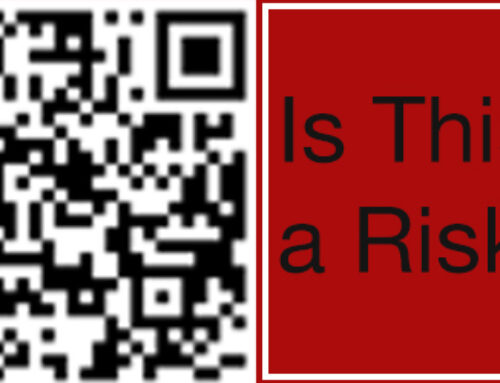
If you are in the field of IT Security and looking for the best Zero Trust Cloud Solution, you may want to brush up on the basics of the concept and how you can protect digital assets in the dog-eat-dog world of cyber security. Let’s go over the basics of Zero Trust!
Zero Trust: what exactly is it?
The concept of Zero Trust is actually pretty straightforward. Zero trust is, in itself, a framework that allows you to secure companies in the mobile/cloud computing world. As it sounds, the framework trusts no sources at all. Via the principle of “least-privileged access” (which we’ll get to later), trust is constantly checked and established at every turn and is based on fluid circumstances that are ever-changing, such as location or what type of information is requested.
According to Microsoft:
“Today’s organizations need a new security model that more effectively adapts to the complexity of the modern environment, embraces the hybrid workplace, and protects people, devices, apps, and data wherever they’re located.”
This statement is brutally accurate. It’s a rough world out there in the digital sphere. IT Security is paramount, and companies need to take extra precautions to ensure that their interests are being protected at all times. There are really no valid excuses in the world of cyber security – there can’t be any excuses. You have to protect your digital assets at all costs.
An overview of zero trust architecture
The core principle of Zero Trust involved constantly verifying if a source is capable of using the cloud securely. This concept is probably best summed up by Tech Whiz John Kindervag, who coined the term “never trust, always verify” specifically for Zero Trust.
Everything is based on the context by which the cloud is being accessed – user role, user location, type of device, and even what they are accessing all come into play. This ensures that shaky connections or potential hacks are stopped at every corner at the cost of only a small amount of time and resources – far less than would be lost if a breach occurred.
Establishing such a framework requires complete transparency and control when it comes to the cloud’s userbase and how they are interacting with the data. All traffic must be verified and observed, and things like strong passwords, multifactor authorizations, and even biometric systems must be part of the realm of Zero Trust.
Believe it or not, network segmentation isn’t the end-all-be-all when it comes to a zero-trust system. With the rise of more robust systems and remote work, it’s all about software “micro-segmentation” – in other words, using software to keep all your work safe and secure, even in systems with multiple clouds in place.
Why should I switch to a Zero Trust system?
IT Security and Cyber Security have generally focused on a “perimeter defense” in the past, at least when it comes to sensitive data related to clients, customers, workers, and business metrics. Although well developed, these concepts – such as the ever-popular “firewalls” – are rapidly becoming outdated. Everything is shifting from on-site work to cloud work, and many workers and customers are accessing sensitive information from the comfort of their own homes. Sometimes they’re not even using a secured device provided by the company! The climate, as one can easily see, is rapidly shifting. More robust solutions are needed in the field of Cyber Security. In other words, companies need a Zero Trust Cloud Solution to adjust for the shift in how data is accessed.
But it is not just how we access the data that is changing. Businesses themselves are rapidly moving away from brick-and-mortar models into something far more fluid and global. The IT Security team can only protect the data so much when everything is decentralized. Someone might be accessing sensitive material from Singapore at the same time that a customer or client makes a purchase in Utah. Our clouds are being bombarded by requests for access from many different spheres of influence. It’s harder to integrate such disparate locations in a quick, efficient, cost-effective, and secure manner. Better measures are needed in the realm of IT Security.
It should also be clarified that a user is more likely to have a security breach at home, and almost everyone is working from home these days. Most people, even those who are computer literate, are not well versed in the field of cyber security. They know the basics but might fall victim to phishing or other easy tricks. The cost of a data breach is astronomical compared to the cost of a robust Zero Trust Cloud Solution.
Moreover, integration is a huge challenge for IT Security teams. Most work is not automated or integrated, and cyber security specialists have to perform a lot of grunt work themselves. Even qualified individuals may be overwhelmed with the amount of data to prune. This leads to a huge spike in payroll expense – one that could be mitigated if there were better-automated systems in place.
So, one might think that they can just design a super redundant and intricate firewall or rewrite security protocols, right? Wrong. This would be a highly costly endeavor and it still requires trust in the workers to be 100 percent accurate at all times. Any misstep and there could be a potential data breach. We need to simplify things by taking the burden out of the hands of the common worker. Everyone should be held to the same standards at all times. Nobody should be trusted: thus, zero trust!
And besides, look at all the cyber security options out there. We could spend an entire day outlining all the options, and most of them are great for personal use or small-scale firms. But when you have a huge, integrated cloud system on your hands, and lots of money and ideas to lose, you need to take appropriate measures. By not trusting anyone, all users get the same amount of security and comfort knowing that nobody will inadvertently cause a breach just because they are a verified user or something similar. Everyone must always be verified – the protection is continuous and highly fluid.
The IT department’s job will be easier. They won’t have to prune through as many data breaches or security compromises due to the redundancies in effect. It’ll even be easier for IT security teams to do their job due to reduced subnet traffic and easier-to-identify risks.

Zero Trust and the importance of context
Context is key with a Zero Trust system, sure, but it’s also a key part of daily life and decision making.
Picture hearing a loud bang. You will jump, startled. Your mind will begin to race and process the noise. It sounds like a gunshot, right? The reverb is pretty loud. Are you or your loved ones in danger? Then you begin to process other information: it’s late June and Independence Day is around the corner. Everyone loves to set off fireworks at this time of year. You look through the blinds and see the bright colors of fireworks. Your hunch was correct – the sound might have been intimidating, but the context shows that it’s really just harmless fun that’s at the root of your concerns. Your brain processed a series of information points and made the appropriate decision, as it always does.
The same exact concept can be applied to business. If someone is on a device in Italy and trying to access accounting information from a firm in the US, but the device they are using has origins in France, you are dealing with three different sources of information. Your system will use a combination of authentication controls, identity regulations, and device management to process the information – much like our brain does with our senses.
All of these steps are integrated and determine if the user is trustworthy enough to access the data. If one of these is suspicious, action must be taken. And indeed, despite having redundant and overlapping systems in place, this sort of context can lead to still lead to a data crisis!
Another example of context: users have control over their own devices, and many are using their own devices to connect to company databases. They are responsible for updating their security framework. Zero Trust ensures that even the CEO cannot be allowed in if they do not have the proper credentials on their laptop. If the context is that the CEO does not have the right credentials, then they are just as much of a risk as a hacker who wants that valuable information. Everyone is held accountable in cyber security.
And then there is the concept of multi-cloud storage. Company info could be on five or six different clouds, all of which are talking to each other and the end user, and all must be secured – but the Cloud IT Specialists may not have access to everything at once. It’s a lot to juggle – unless you have a Zero Trust approach. For a little more hassle, you cut the red tape, so to speak. Give your users access to only the information that they need. But this is where consideration of context – and the implementation of consistent and transparent protocols – comes into play because end-user needs are always changing.
The first step is to outline the context as it relates to your business. Determine under what conditions a user can be trusted and be consistent about enforcing these conditions. They must be enforced consistently, or some departments and users may get frustrated that they are being withheld information or not getting “preferential treatment”. The last thing we need is a mess of office politics on our hands. Plus, the more well-defined the context is, and the more hard-lined the rules are, the easier it could be to integrate AI solutions in the coming years.
The concept of Least-Privileged Access
Zero Trust solutions must take into account the idea of “least-privileged access.” In the field of IT Security, the concept of least-privileged access entails that your users get access to only what they need to do their job well. It’s the classic movie case of a low-level grunt only being able to access low-end systems. You even see it in video games where a spy will talk to an NPC who will give them access to a slightly more secure part of the level, all the way up until they defeat the boss (literally). This approach keeps more valuable data protected from those who have more incentive to steal it, such as new employees or irate low-level workers.
As mentioned, data is more cloud-driven than ever before, which underscores the need to emphasize least-privileged access policies. Zero Trust is guided by the POLP, or “principle of least-privileged access”. This concept takes the authentication of a user’s identity, the degree of security of the device, and the status of the user relative to the application they are using. and user-to-app segmentation.
It’s important to remember that Zero Trust is different from POLP or the concept of least-privileged access. The latter may still have some trust or credentials, while the former has none. So how are they related? Well, Zero Trust is just POLP on steroids: nobody, even the CEO, can access even Photoshop or Google Drive without doing their due diligence and proving that they are who they say they are, their device is secure, and they have a good reason to be accessing the information. This way, all sensitive information is held accountable and data breaches are even less likely than they would be if the company just operated on a POLP system. Nobody can just take the CEO’s password and have their way with the data – or, in the video game example, subdue an NPC and use their access keys. They must verify at every step.
In the modern cyber security world, Zero Trust is all about ensuring that users are constantly verifying that their connection is secure, that they are who they say they are, and that they have a reason to be accessing the information. This context-driven, no-exceptions policy is a more potent version of the principle of least-privileged access and is perfect for the modern business environment for one massive reason. Many people are connecting to the company’s systems remotely, and more and more companies are using cloud systems – thus, Zero Trust adds a much-needed layer of security to guard the company’s soft underbelly.
Skyline IT Services has been the go-to San Diego IT support service for some of the top companies. Remember: in the world of IT Security, it can be mighty damaging to take risks. It is far, far cheaper to secure your data than it is to recover it. Head here to see how Skyline IT Services can secure your business.



